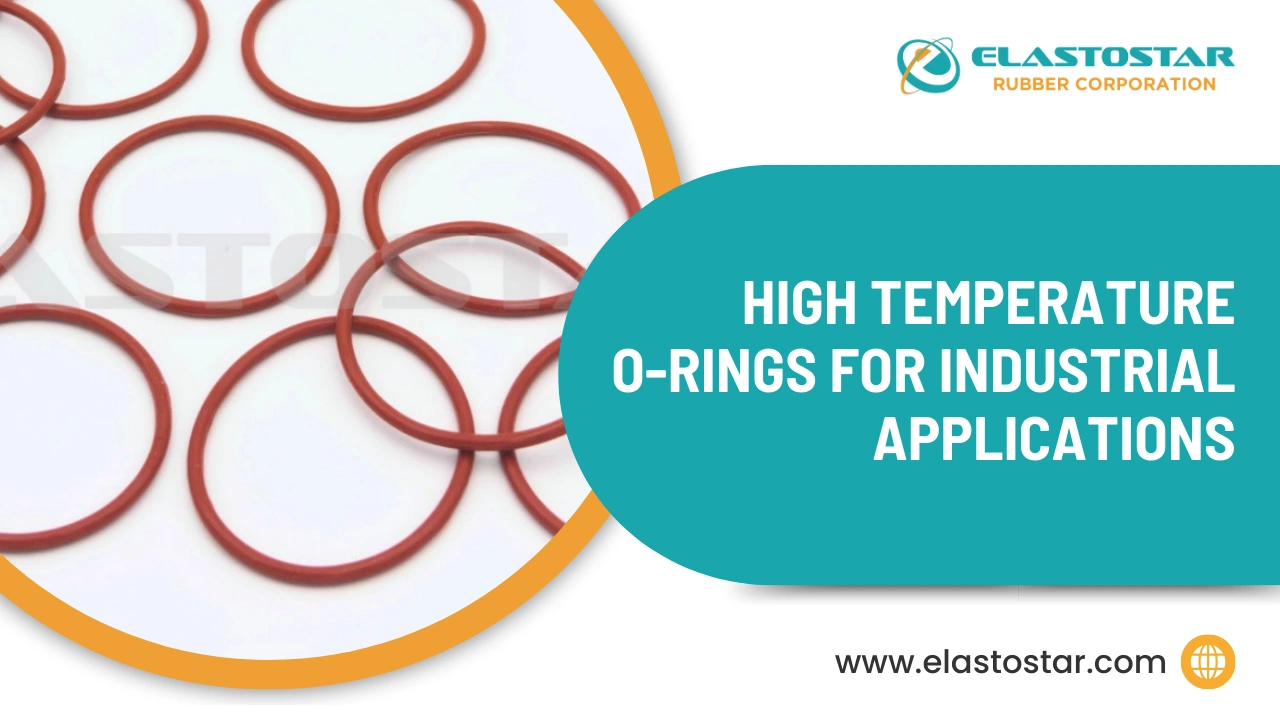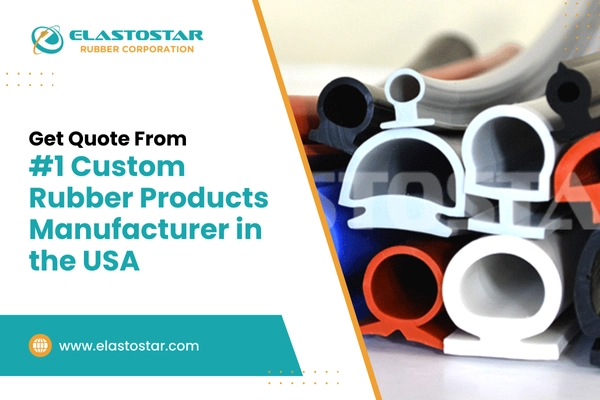Did you know that rubber, found in everyday items like shoe soles and hoses, starts as a liquid called latex, primarily sourced from the rubber tree? In 1839, Charles Goodyear discovered how to vulcanize rubber, transforming it into the durable, flexible material we rely on today.
This process revolutionized industries worldwide, with vulcanized rubber becoming essential for products like automobile parts and medical supplies. In this blog, we’ll explore the history of vulcanization, how it works, and its lasting impact on modern manufacturing.
Table of Contents
What is the vulcanization of rubber?
Vulcanization of rubber is the chemical process that transforms natural rubber into a more durable and flexible material. By heating rubber with sulfur, vulcanization creates cross-links between the rubber molecules, significantly improving its properties. Before this process was discovered, natural rubber was sticky and brittle, making it unsuitable for many practical uses.
Rubber vulcanization addresses these issues, enhancing rubber’s strength, elasticity, and resistance to temperature changes. This makes vulcanized rubber a critical component in industries like automotive, manufacturing, and healthcare, where durable, high-performance materials are essential for a wide range of products.
The History of Vulcanization
In the early days, natural rubber had significant limitations. It became sticky in heat and brittle in cold, making it unsuitable for many industrial applications. This changed in 1839 when Charles Goodyear discovered the process of vulcanization.
During his experiments with rubber and sulfur, an accidental drop of the mixture onto a hot stove resulted in a durable, flexible material. This incident marked the beginning of the vulcanization of rubber, transforming the industry.
Before vulcanization, rubber’s unstable properties restricted its use. Goodyear’s discovery improved rubber’s strength and versatility, leading to the production of critical products such as vulcanized tires, belts, hoses, and seals. Vulcanization quickly became essential to industrial manufacturing, especially during the Industrial Revolution.
Today, modern rubber vulcanizers have refined the process to meet the stringent demands of industries like automotive, aerospace, and healthcare, ensuring high-performance, durable rubber materials that meet rigorous conditions.
How the Vulcanization Process Works?
The vulcanization process chemically enhances natural rubber by heating it with sulfur, which forms cross-links between the rubber’s polymer chains. This improves the material’s strength, flexibility, and resistance to temperature changes, making it more durable for products like vulcanized tires.
- Chemical process: Sulfur cross-links rubber polymers, stabilizing the material.
- Role of heat and pressure: Heat activates the reaction, while pressure ensures even curing.
- Types of vulcanization: Common methods include sulfur vulcanization and peroxidic vulcanization, each suited for specific applications.
This process is essential for creating high-performance rubber products used in automotive, industrial, and many other sectors.
What are the Advantages of Vulcanized Rubber?
The process of vulcanizing rubber significantly improves its performance compared to untreated rubber, offering multiple advantages across various applications.
- Durability: Vulcanized rubber is highly durable, resisting wear and tear over time, making it ideal for products like tires and industrial machinery.
- Temperature resistance: Unlike untreated rubber, which deforms in extreme heat or cold, vulcanized rubber maintains its properties, performing well in all weather conditions.
- Elasticity: By vulcanizing rubber, its elasticity is improved, allowing it to stretch and return to its original shape without breaking, which is crucial for seals and gaskets.
- Chemical resistance: Vulcanized rubber is more resistant to chemicals, oils, and solvents, making it suitable for industrial environments.
- Abrasion resistance: The process of vulcanization also makes the rubber more resistant to abrasion, which is essential for products like hoses and conveyor belts.
At Elastostar Corporation, we specialize in producing high-quality spliced and vulcanized silicone rubber O-rings, offering custom solutions that ensure precision and durability for demanding industrial applications.
Modern Applications of Vulcanized Rubber
- Automotive industry: The vulcanization process is essential for producing durable tires, belts, and gaskets that can handle the extreme conditions of vehicles, from road friction to heat generated by engines.
- Industrial applications: Uses of vulcanized rubber include conveyor belts, seals, and vibration dampeners in heavy machinery, where durability and flexibility are crucial for smooth operations.
- Medical and household applications: In the healthcare sector, vulcanized rubber is used to make gloves, hoses, and other products that require flexibility and strength. Similarly, in homes, it can be found in items like shoes and garden hoses.
- Innovations in rubber technology: With advancements in sustainable materials, industries are now exploring eco-friendly vulcanized rubber products, further extending their application into areas like renewable energy and environmentally conscious consumer goods.
Since Charles Goodyear invented rubber through vulcanization, its applications have continued to evolve, making it a cornerstone of modern manufacturing in numerous fields.
| Property | Vulcanized Rubber | Non-Vulcanized Rubber |
| Elasticity | Retains shape after stretching; highly elastic | Deforms permanently after stretching |
| Strength | Strong and durable due to sulfur cross-linking | Softer, prone to wear and tear |
| Heat Resistance | High resistance to heat; does not melt or degrade easily | Low heat resistance; breaks down under heat |
| Durability | Highly durable; resists environmental factors like UV, ozone | Less durable; deteriorates quickly in harsh conditions |
| Common Applications | Tires, belts, gaskets, industrial seals | Temporary applications, simple rubber bands, soft toys |
Recommended Reads
- Silicone Rubber: Where It Comes From
- Explore The Versatile Silicone Rubber Cord
- A Complete Guide – What Is Rubber Silicone O-Rings?

Conclusion
Vulcanization has transformed rubber into a highly durable and versatile material, essential for numerous industries and applications. Its ability to improve rubber’s strength, flexibility, and resistance has made it a critical component in modern manufacturing, from automotive to healthcare. As technology continues to evolve, vulcanized rubber remains a foundational material, ensuring reliability and performance in various products.
FAQs
Who discovered the vulcanization of rubber?
Charles Goodyear discovered the process of vulcanization in 1839, which revolutionized rubber by making it stronger and more durable.
What is the history and origin of rubber?
Natural rubber, derived from the rubber tree, has been used for centuries. However, it became truly versatile after Charles Goodyear invented the vulcanization process in 1839, transforming the way rubber was used across industries.
What are the modern uses of vulcanized rubber?
Vulcanized rubber is used in a wide range of products, including tires, belts, seals, hoses, and medical supplies due to its strength, flexibility, and durability. At Elastostar Rubber Corporation, we specialize in manufacturing custom vulcanized rubber products tailored to the needs of industries like automotive, aerospace, and healthcare.
What is the origin of the word vulcanization?
The term “vulcanization” comes from Vulcan, the Roman god of fire, reflecting the heat-based process used to improve rubber’s properties.
What is the vulcanization of rubber?
Vulcanization of rubber is a chemical process that involves heating rubber with sulfur, enhancing its strength, elasticity, and resistance to temperature changes.
Is vulcanization environmentally friendly?
Traditional vulcanization involves chemicals like sulfur, which can have environmental impacts. However, at Elastostar Rubber Corporation, we are committed to exploring eco-friendly vulcanization methods that reduce the environmental footprint while maintaining high product quality. Contact us for more details.




